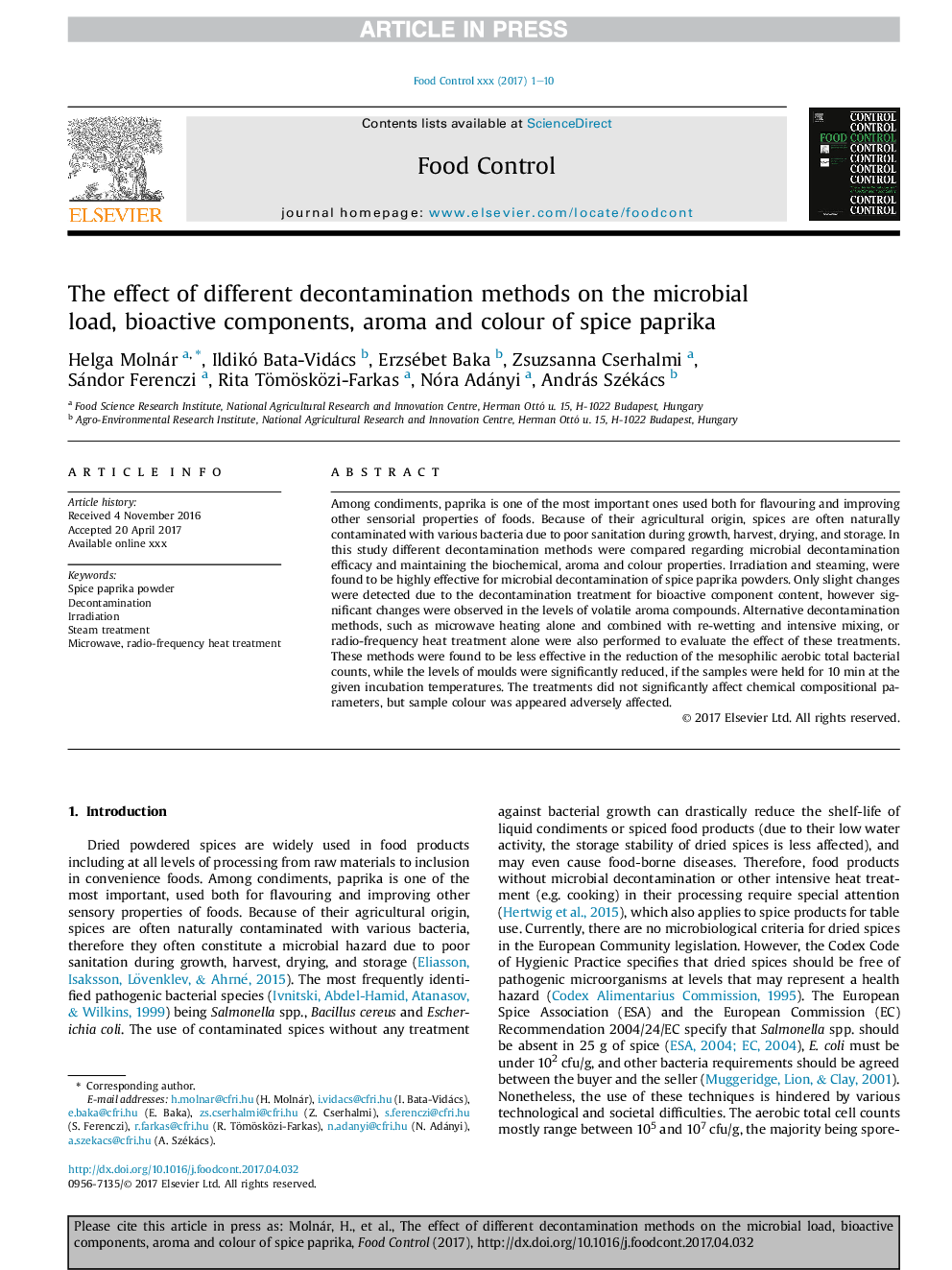| Article ID | Journal | Published Year | Pages | File Type |
|---|---|---|---|---|
| 8888306 | Food Control | 2018 | 10 Pages |
Abstract
Among condiments, paprika is one of the most important ones used both for flavouring and improving other sensorial properties of foods. Because of their agricultural origin, spices are often naturally contaminated with various bacteria due to poor sanitation during growth, harvest, drying, and storage. In this study different decontamination methods were compared regarding microbial decontamination efficacy and maintaining the biochemical, aroma and colour properties. Irradiation and steaming, were found to be highly effective for microbial decontamination of spice paprika powders. Only slight changes were detected due to the decontamination treatment for bioactive component content, however significant changes were observed in the levels of volatile aroma compounds. Alternative decontamination methods, such as microwave heating alone and combined with re-wetting and intensive mixing, or radio-frequency heat treatment alone were also performed to evaluate the effect of these treatments. These methods were found to be less effective in the reduction of the mesophilic aerobic total bacterial counts, while the levels of moulds were significantly reduced, if the samples were held for 10 min at the given incubation temperatures. The treatments did not significantly affect chemical compositional parameters, but sample colour was appeared adversely affected.
Related Topics
Life Sciences
Agricultural and Biological Sciences
Food Science
Authors
Helga Molnár, Ildikó Bata-Vidács, Erzsébet Baka, Zsuzsanna Cserhalmi, Sándor Ferenczi, Rita Tömösközi-Farkas, Nóra Adányi, András Székács,
